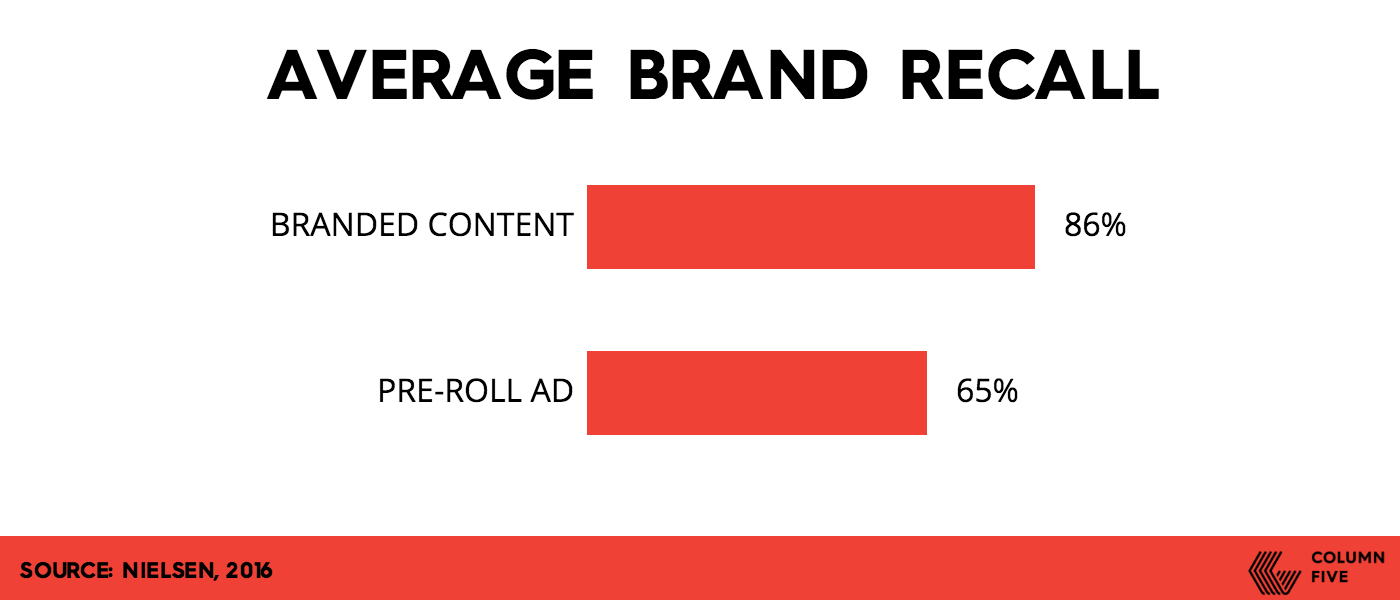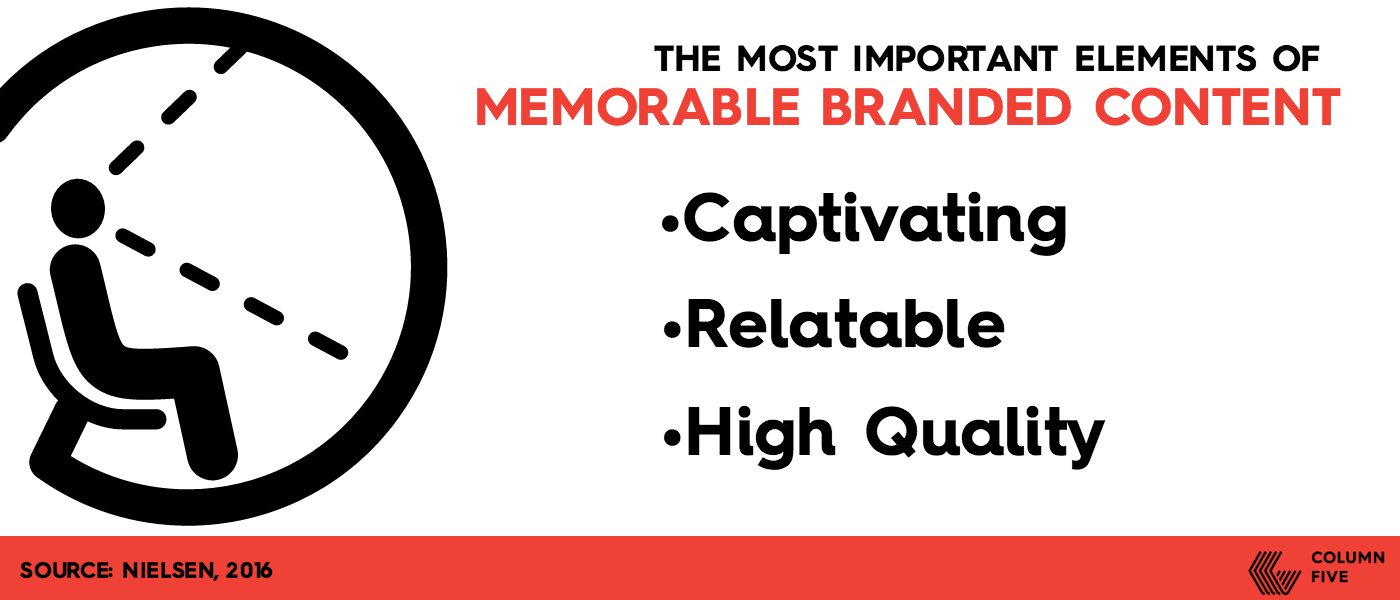As old ad models continue to prove less effective, branded content has made its way to the forefront of marketing. Whether it’s product placement through a web series (think Jerry Seinfeld’s Acura-sponsored Comedians in Cars Getting Coffee) or industry-specific content (think educational e-books and infographics), this rise in popularity is not a trend.
New research is proving its efficacy—far more than we previously anticipated. Case in point: Nielsen recently conducted a study to find out just how effective branded content is, and if there are any elements that increase its efficacy, compared to more traditional forms of advertising.
After the company analyzed consumer responses to more than 100 pieces of branded content, they discovered that, yes, it is more effective in several ways:
- It drives higher brand recall and lift than pre-roll ads.
- Consumers view brands more favorably when they enjoy branded content.
- It has more impact when distributed through a publisher.
Most interestingly, branded content’s effectiveness is largely influenced by both its format and the environment in which it is viewed.
Much of this research makes sense, considering our everyday behavior. (How often do you immediately skip the video ad that comes up before your YouTube video?) But when you look at how branded content affects overall perception long-term, its power is more evident.
Branded Content Increases Recall
As part of the experiment, Nielsen presented viewers with two marketing items from the same brand. One piece of content was a pre-roll ad; the other was a piece of branded content. The piece of branded content resulted in 86% brand recall, while the pre-roll resulted in 65% brand recall.

It also outperformed the pre-roll in other brand favorability metrics, as you can explore in Nielsen’s interactive here:
Branded Content Engages Consumers
The study also looked at the effect of branded content on brand lift. The results were promising as well. The more consumers enjoyed a piece of content, the more open they were to a brand’s messaging.
Now this doesn’t mean a consumer likes your brand more; it means they are more willing to engage with your more hard-selling stuff. Translation: Branded content is the first entry point to building a relationship. But that’s only if consumers enjoy your content. What content do they enjoy most? Stuff that is captivating, relatable, and high quality.

Branded Content Needs Publishers
Of course, while content is important, it won’t be effective if it doesn’t find its audience. Publishers and influencers are the keys to getting that exposure—they’re also an important factor if you want more brand lift. According to Nielsen, “Marketers that distributed their branded content in partnership with a publisher saw a higher brand lift—50% higher, on average—than those who published content on their own.
The real takeaway here? Content marketing is most effective when you have the right content delivered through the right channels.
For more tips to help you do that, find out how to promote content to journalists and bloggers, use our favorite resources for creating great content, and learn more about why visual content helps brands tell better stories.




